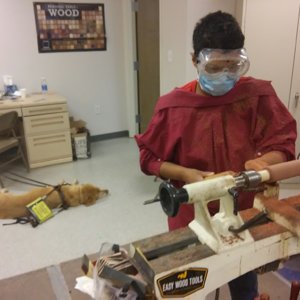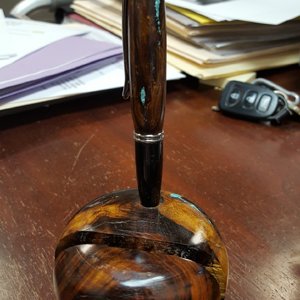sorcerertd
Member
OK, so I'm beyond frustrated with my freakin' mandrels. I've noticed wobble in my mandrel, but it just got a lot worst all of a sudden. I really can't even use it. I have a small cheap lathe that isn't good for much but pens and sometimes I use it just for finishing. I have a separate mandrel as it is MT1 and my Jet is MT2. That was just as bad and it wasn't the last time I used it. I don't get it. What kind of cheap steel are these things made of? They are both PSI mandrels with the mandrel saver. I frequently sand by hand to remove the sanding "rings" just turning the handle a little at at time as I go. Searching around here, the only thing I can come up with is that maybe I'm using too much pressure sanding.
Anyway, I need a new mandrel. Damnit. Not sure I want another of the same kind, though. Can I, or is it a good idea to, use the mandrel saver with a regular mandrel with the nuts on it? I was thinking of one with a collet on the headstock end. What do you guys recommend as far as what to buy and how to avoid bending it?
I still don't think I was applying so much pressure that it should bend steel even it it is a little on the soft side, but yet here we are.
Anyway, I need a new mandrel. Damnit. Not sure I want another of the same kind, though. Can I, or is it a good idea to, use the mandrel saver with a regular mandrel with the nuts on it? I was thinking of one with a collet on the headstock end. What do you guys recommend as far as what to buy and how to avoid bending it?
I still don't think I was applying so much pressure that it should bend steel even it it is a little on the soft side, but yet here we are.



